This post may contain affiliate sales links. Please read my disclosure policy.
This Vanilla Buttercream Frosting is creamy, sweet and easy to customize! It’s perfect for piping onto cakes, cupcakes and more.
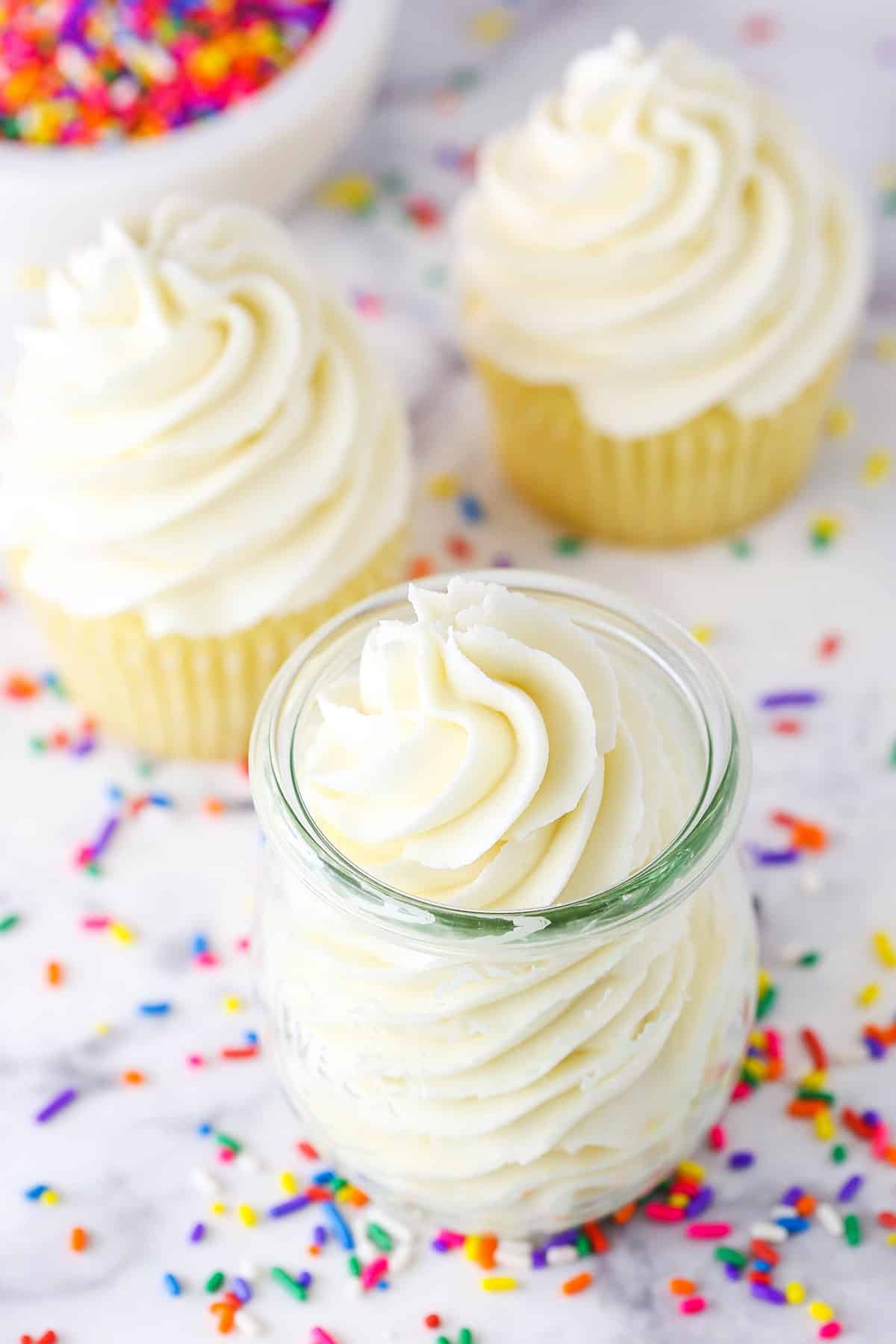
Table of Contents
Easy Vanilla Buttercream Frosting
So this post has actually been on my site for more than 5 years now and today I’m giving it an update. I get SO many questions about buttercream and direct people here often. I feel like the information that was here wasn’t as helpful as it needed to be, so today that changes.
Plus, in the last 5 years I’ve made SO MUCH BUTTERCREAM and my opinions have changed slightly, so I feel like those things are worth sharing. All that said, my recipe is still the same. But hopefully you’ll find everything else included with it even more helpful than before.
Let’s get started!
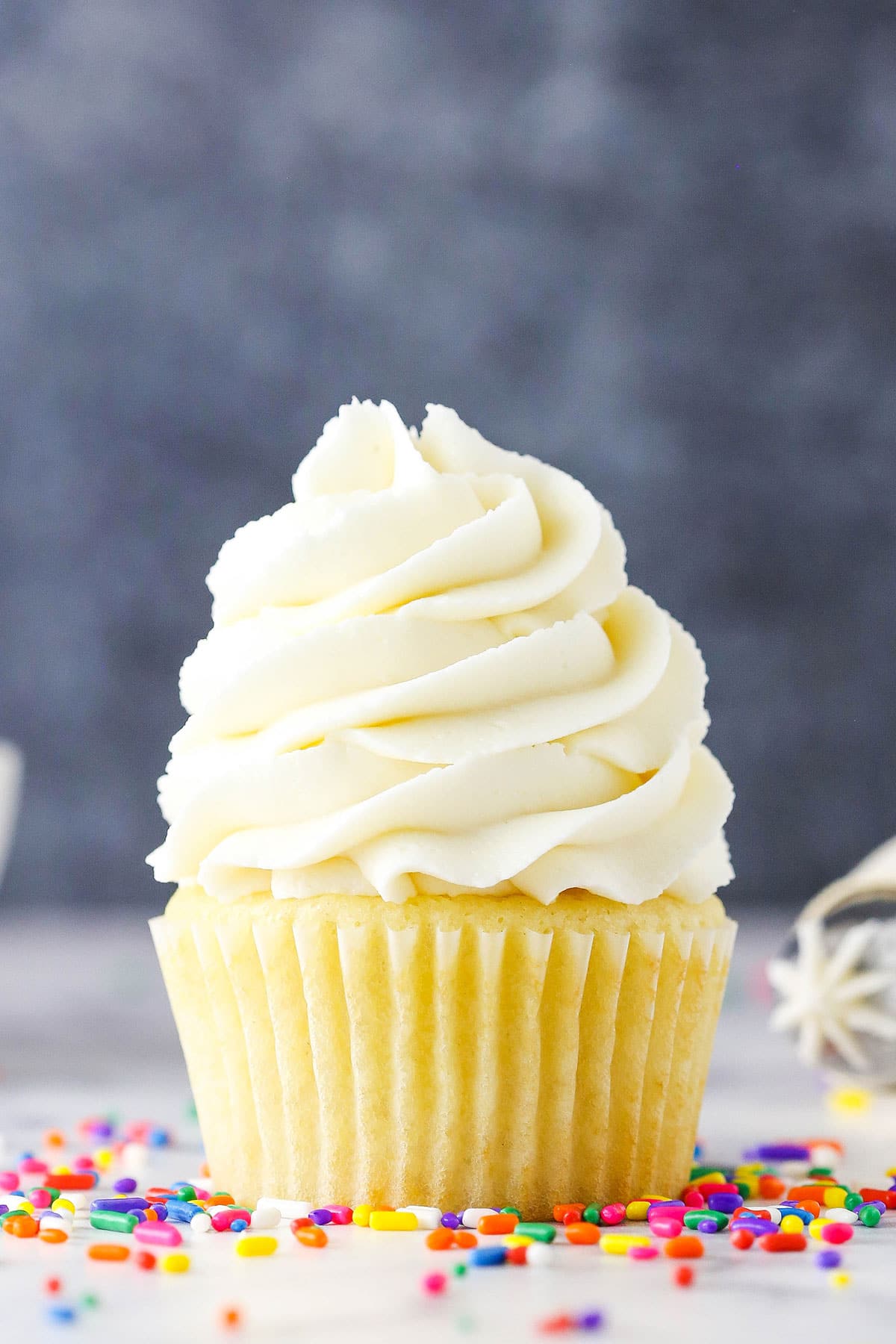
Buttercream Frosting Ingredients
The ingredients used in a classic vanilla buttercream often vary only a little. Here is what I use when I make buttercream frosting:
Butter
Naturally this is the most important since we are making BUTTERcream.
In the past, I’ve said that I like to use a mix of salted and unsalted butter (or salted butter and shortening – see next ingredient), but this is one thing that has changed a little lately.
Now I recommend using all unsalted butter and then adding salt to taste. You most definitely don’t want to use all salted butter – it gives the buttercream a very strong salty butter flavor and you really don’t want that. So – you’ll need room temperature unsalted butter.
Shortening
This is one ingredient that often leads to questions.
“Can I substitute it for more butter?” Yes.
“Why do you use it? It’s gross.” Well, that’s a longer answer.
Let’s talk about it a bit. One reason I often use some shortening is for consistency purposes. When a cake doesn’t need to be refrigerated because of a filling or something, I like to leave my cakes at room temperature. I just prefer their texture that way. When an all-butter buttercream is left at room temperature for a full day or overnight, I find that it kind of releases moisture that I don’t care for.
By contrast, when I use some shortening, that doesn’t happen.Another thing about shortening is that if you live in a warm climate or are making cakes that will be outdoors, shortening can be really helpful because it’s not as susceptible to heat, like butter.And then the original reason that I started using some shortening was that I always found the buttery taste of an all-butter buttercream to be too much. But of course, this is another area where my opinion has changed a bit. Butter has grown on me. Lately I find myself enjoying an all-butter buttercream. Just be sure to use unsalted butter, like I said before.
Powdered Sugar
Also something I get a lot of questions about. This recipe uses a full 4 cups of powdered sugar to 1 cup of butter/shortening. The high amount of powdered sugar make this buttercream stable and pipe-able. This recipe covers roughly 12 cupcakes for me when frosting them quite generously, which I do. So when I frost cakes, which I also do quite generously, I double and sometimes even triple this recipe. That means anywhere from 8-12 cups of powdered sugar. A lot? Yes. But if you reduce it, you totally change the consistency of the frosting, which is super important – especially when frosting cakes and cupcakes. To read more about frosting consistency, check out this post.
Vanilla Extract
Naturally, this adds flavor. But the great thing about this buttercream is that it’s so adaptable. Swap out this extract for another and you’ve got another flavor. Score!
Heavy Cream or Water
I tend to use water, but cream also works well. Again, I like to leave my cakes at room temperature when I can, so I usually just go with water. That said, the high amount of fat in buttercream should keep buttercream that uses heavy cream fine at room temperature for a day or two.
Salt
Since unsalted butter is recommended, you’ll want to add salt to taste. I think this is really a big personal preference with this recipe. The salt can help cut back on the sweetness a bit. Too much though and it gets quite salty.
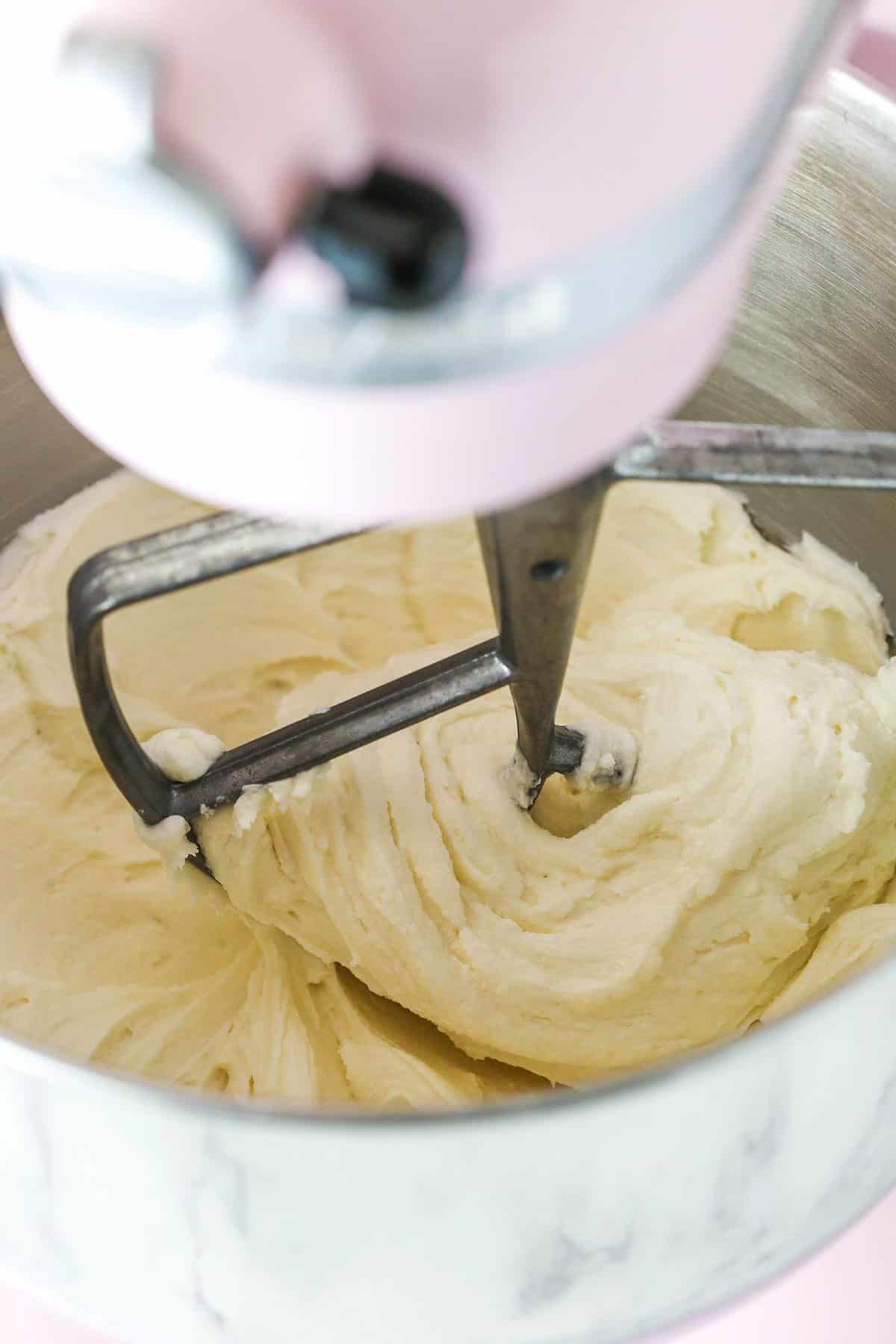
How To Make Vanilla Buttercream Frosting
This buttercream is super quick and easy to make!
- First, add your butter (and shortening, if using) to your mixer and beat until smooth and creamy. Again, be sure it’s all at room temperature.
- Next, you’ll add about half of the powdered sugar. It doesn’t have to be exact.
- Then add your extract and some water or cream. Basically, we want to add some liquid to keep the buttercream from getting super thick as we continue to add the powdered sugar. I usually add one tablespoon of liquid, plus the extract at this point.
- Add the rest of the powdered sugar and mix until smooth.
- At this point, you’ll want to add additional liquid as needed. How much you’ll add may depend a little on what you’re using your buttercream frosting for, but generally 2-4 tablespoons is plenty. Again, you can refer to my post on frosting consistency for a little more help on when to add more liquid and how much is too much.
- Finally, add a little salt. Start with a pinch and go from there.
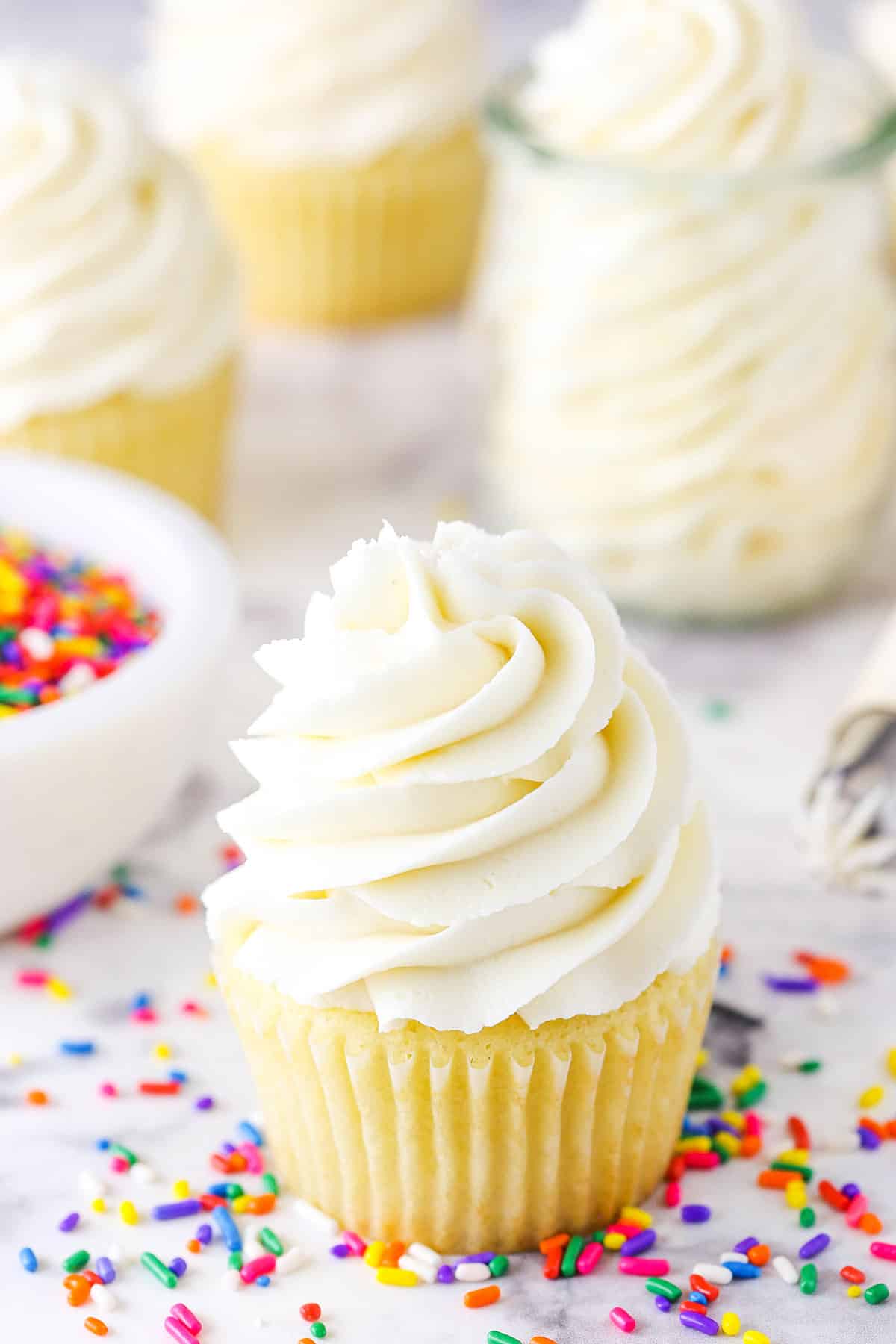
How to Decorate Cakes and Cupcakes with Buttercream
If you’re looking for help decorating your cakes and cupcakes, I’ve got tutorials for both. My How to Frost a Smooth Cake tutorial is so well loved and an all time most viewed post. The video has more than a million views on YouTube. I really get into the details of how to actually frost your cake, so check it out. My tutorial for How to Frost Cupcakes is wonderful too. I show you 9 ways to frost cupcakes with 6 different piping tips. You can find links to all the tools I use in those posts, but here are some of my favorite piping tips.
- Ateco tip 844 – A go-to for piping onto cupcakes and for borders around cakes.
- Ateco tip 808 – A wonderful large round piping tip.
- Ateco tip 847 and Ateco tip 849 – Similar to the 844, but larger. I used the 847 tip on the cupcakes in these photos.
- Sprinkles – Not exactly a piping tip, but who doesn’t love them?
- Piping bags – Because you need these too.
Can I make buttercream ahead?
Absolutely! Make it and leave it on the counter overnight, or refrigerate it for up to a month.You can even freeze it for up to 3 months.
Why is my buttercream grainy?
If this happens, most likely this has to do with your powdered sugar. There’s no other ingredient that would be grainy. If you do experience this, you’ll want to try sifting your powdered sugar. I’ve never needed to do that, but if you don’t use your powdered sugar much and it’s been sitting for some time or you live in a humid environment, it may get kind of clumpy and then you’ll want to sift it.
Can I reduce the amount of powdered sugar?
Yes and no. Sure you can reduce it. Who’s to stop you? You’ll end up with a buttercream frosting (technically). But this question is really one of consistency.
I’ve been asked before if it was ok to reduce 8 cups of powdered sugar to 2 cups. If we talk about ratios here, then there’s 2 cups of butter for those 8 cups of powdered sugar. So if you reduce the powdered sugar to 2 cups without also adjusting the butter, it’ll be like eating straight butter with a touch of powdered sugar. Can you do it? Sure. Would I ever recommend it? Absolutely not. Not only would that taste bad (in my opinion), but the consistency would be totally off and it might not stay well on the cake it’s meant to go on. Not to mention that you couldn’t pipe it.
So I go back to recommending you check out my post on buttercream frosting consistency. Whether or not you can (or should) reduce it depends on how you want to use your frosting (and how you want it to taste).
And if you truly aren’t a fan of using much powdered sugar, then I might suggest checking out another kind of buttercream. This is an American Buttercream which gets it volume and stability from powdered sugar, so it’s hard to avoid. Swiss Meringue Buttercream gets its volume from egg whites that are cooked, so maybe check that out. I don’t currently have a recipe to recommend, but am working on it.
So there it is! Vanilla Buttercream Frosting. Super easy and totally delicious. I hope this updated post helps! As always, if you have questions, leave them below and I’ll do my best to help.
You might also like these frosting recipes:
Homemade Strawberry Frosting – 2 Ways
Cream Cheese Frosting
Fudgy Chocolate Buttercream Frosting
Stabilized Mascarpone Whipped Cream
Easy Strawberry Whipped Cream – 2 Ways
Chocolate Ganache
Watch How To Make It
Print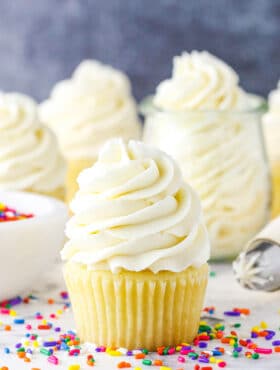
Vanilla Buttercream Frosting
- Prep Time: 15 minutes
- Cook Time: 0 minutes
- Total Time: 15 minutes
- Yield: about 2 1/2 cups
- Category: Dessert
- Method: No Bake
- Cuisine: American
Description
This Vanilla Buttercream Frosting is creamy, sweet and easily adjustable! It’s a must-have recipe that’s super easy to make and pipes perfectly onto cakes and cupcakes!
Ingredients
- 1/2 cup (115g) unsalted butter, room temperature
- 1/2 cup (95g) shortening (or additional butter)
- 4 cups (460g) powdered sugar
- 1 tsp vanilla extract
- 2–3 tbsp (30-45ml) water or heavy cream
- Salt, to taste*
Instructions
- Combine the butter and shortening in a large mixer bowl and beat until smooth and creamy.
- Add about half of the powdered sugar and mix until smooth and well combined.
- Add the vanilla extract and 1 tablespoon of water or cream and mix until smooth and well combined.
- Add the remaining powdered sugar and mix until smooth and well combined.
- Add more water or cream until desired consistency is reached, then add salt to taste.
Notes
For the salt, start by adding a pinch or two and add more to your taste. I wouldn’t suggest adding more than 1/8 tsp.
You can add different extracts to change up the flavor. You can also add 1/4-1/2 cup of cocoa and a little more liquid to get a chocolate icing. For a peanut butter icing, add 3/4 cup of peanut butter.
Nutrition
- Serving Size: 2 1/2 cups
- Calories: 3288
- Sugar: 391.8 g
- Sodium: 742.3 mg
- Fat: 194.5 g
- Carbohydrates: 399.7 g
- Protein: 1 g
- Cholesterol: 244 mg

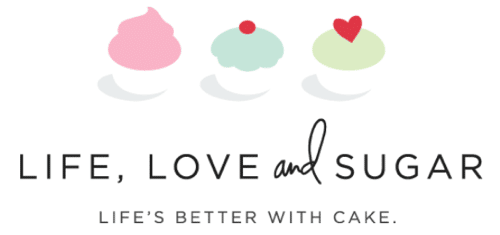



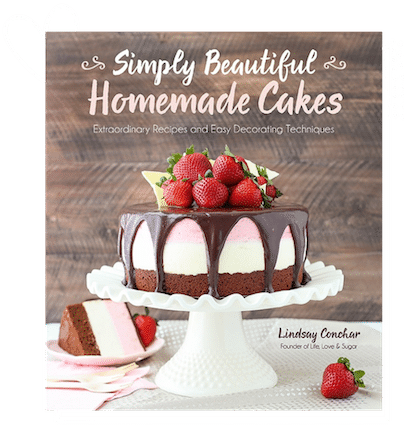
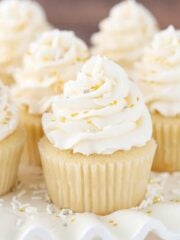
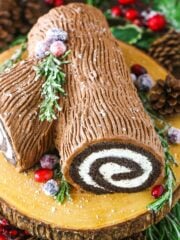
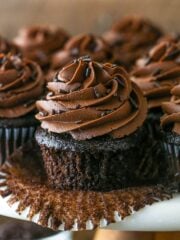
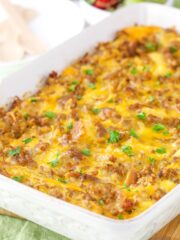
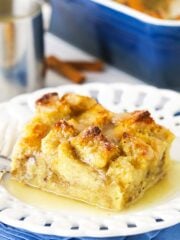
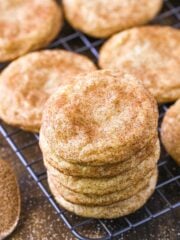
Can’t wait to try this recipe! Do you use pure icing sugar or icing mixture? Thank you
I use regular icing sugar.
Hello, I would like to know what shortening is? Thanks so much!
It’s a butter substitute. You find it at the grocery store near the vegetable oil.
Hello ma’am. Thanks for the recipe but I’d like to ask how big a cake this recipe would cover. And what adjustments would I need to make for a high stack 8″ cake. Thanks
I tend to use a fair amount of frosting so this recipe frosts about 12 to 15 cupcakes for me. If frosting a regular 8 inch cake that’s between three and 4 inches tall, I will usually use 2 to 2 1/2 recipes worth of this buttercream.
Dear Linsay,
I tried this recipe yesterday, but I did not get a completely smooth texture. When I tasted it, I noticed that the icing sugar did not properly mix with the butter and shortening since it felt very sandy. Although I refrigerated it and then it tasted really nice, like oreo’s cream but the sandy texture was still there.
It sounds like you might’ve needed to sift the powdered sugar. If your powdered sugar was sitting in the pantry for a while or it’s really humid in your area or something, that would probably be why.
Hi- is really like to use this recipe for cupcakes I’m making for a friends birthday but I’m looking for an Oreo/cookies and cream version. How would you suggest adapting this recipe to be Oreo?
Thanks!!
I would check out the Oreo buttercream on these cupcakes https://www.lifeloveandsugar.com/oreo-chocolate-cupcakes/
Which shortening do you use? I afraid to use it by smell, texture and flavor.
Thank you
I use Crisco. You can always replace the shortening with butter though, if you prefer.
Ok Thank you so much! I just need to frost about 60 cupcakes this weekend so I wanted to know how far in advance I could start making the frosting 🙂 . And how to store it
So thanks again,
Cindy
Hi Lindsay,
quick question, I know its posted somewhere I just can’t find it. What is the shelf life for your
Vanilla Buttercreme Frosting
Should I keep it in an airtight container on the counter or in the fridge? How many days?
Can it be frozen and then re used if there is extra? How do I defrost it?
On the counter or in the fridge?
Thank you 🙂
It should be fine at room temperature on the counter for about a week. It’s fine in the fridge for about two weeks. And then frozen for about a month or so. I’d probably suggest defrosting it in the fridge, but it should be fine on the counter as well.
This cake is beautiful. Quick question, do you have a recipe for cream cheese crusting butter cream?
If you were to add the cocoa powder or peanut butter to the frosting would the frosting still crust like it does? what about if you add cream cheese?
Yes, it would still crust. Same for the cream cheese. If you’d like a cream cheese frosting recipe, you can find that here.
So you only use shortening for flavoring purposes, not for crusting? And why don’t you use shortening for the cream cheese version?
More for consistency purposes, but in part for flavoring. Though I will admit that butter has grown on me recently. 🙂 I believe the buttercream would crust with all butter as well.
As for the cream cheese version, it’s a totally different frosting for me. I much prefer the flavor of it as is (no need to adjust for that reason) and as for consistency, I have no expectations of cream cheese frosting being nearly as stable as vanilla buttercream. You could certainly use shortening to help, if you wanted more stability, but you do sacrifice flavor. Plus, I always refrigerate cream cheese frosting, where as with vanilla buttercream, I mostly don’t.
Hi,
I was wondering if you leave out the merengue powder? I know in the Wilton buttercream, they use it to give stability. Does it not need it?
No, this buttercream doesn’t need meringue powder.
Hello Lindsey, just found your video on YouTube and came to check out your page. Excited to try the recipe. If I want to make the buttercream in bulk. What is the Ratio to use? Take for example I want to make the buttercream that can frost a two tiered cake. Thank you. Will definitely try it and let you know how it came out. A little skeptical of using shortening.
This is the recipe I start with and just adjust as needed. It’s hard to say how much you’ll need for a two tiered cake – what size are the two tiers? How tall? Are you using buttercream between the layers, or some other filling? How many layers are in each cake? All those things affect the amount of frosting you need. This recipe is enough to generously frost 12 cupcakes. I usually double it or do 2 1/2 recipes worth for an 8 inch cake with 3 layers inside, so maybe that can help as a guide.
If you aren’t a fan of shortening, you can use all butter. You’ll still be able to use the smooth frosting tutorial method. But you will need to refrigerate the frosting if it’s going to sit out for more than about 12 hours. It’s not as stable as when you use some shortening in it.
I hope that helps!
I’m excited to try this recipe. Is it firm enough to pipe flowers? I’m making a layered rosette cake. Thank you!
Definitely firm enough. Check out my post on frosting consistency too, if you’d like.
Thanks Lindsay for the response. I did it before the response. It worked out perfectly. Very different texture from just the good ole butter and icing sugar, but adding the shortening (copha) it definitely added that different element to a standard buttercream. A win being a lot whiter than using just butter. My copha wasn’t soft enough so did take along time to beat into the butter. I wonder if melting the copha down and beating it into the butter would be easier or more effective?
But overall my review is 5 stars. I use half and half unsalted and salted butter and bit of water as you said, I was a bit worried but it did all cone together eventually.
I agree with the crust when left, Christmas day was a bit of a made house so I had to keep walking away from the cake and that made things difficult and I am a perfectionist but I dipped a knife into hot water and that helped soften and make the buttercream movable in bits I needed to fix.
I had the cake on the bench all day, in Australia weather and surprisingly it held up and no melting or anything. You could touch it and no buttercream will go on the fingers. I was impressed.
Thanks
I’m glad it turned out well for you! As for melting down the copha, I don’t know about that. It would thin out the frosting a lot. If you refrigerated it so that it thickened back up, maybe it’d be ok, but I’m not sure.
Hello, I am going to try give his recipe a go, but I am going to do a semi-naked cake and was wondering if this buttercream will be OK? I read in comments that it creates a crust after sitting for a while. Would that be OK for a semi naked cake? Thank you
It should be fine for a semi-naked cake. I’ve used it before without a problem. Just be sure to finish smoothing out and touching up the frosting before letting it sit, because then the crust forms.
Can this recipe be smoothed for a wedding cake?
Yes, it can be. See my tutorial for frosting a smooth cake, which uses this frosting.